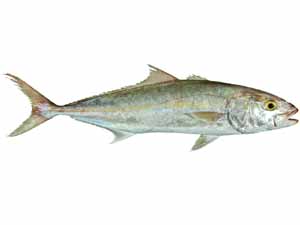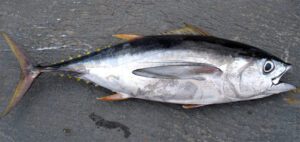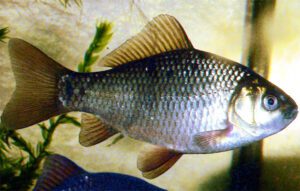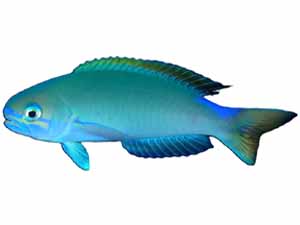The Asian swamp eel is a air-breathing species of fish in the Synbranchidae family. It is commercially a very important fish. It is also known by some other names such as Rice eel, Swamp eel, Ricefield eel, belut, rice paddy eel, ta-unagi and White ricefield eel. It was originated in the waters of East and Southeast Asia. And it has been identified as an invasive species in the North American Everglades.
The Asian swamp eel is native to the regions in eastern and southern Asia, and also possibly indigenous to Australia. It is mainly found in the muddy ponds, canals, rice fields, swamps and medium to large rivers. Read some more information about this fish species below.
Asian Swamp Eel Characteristics
The Asian swamp eel has an elongated, snake-like body. They have a blunt, rounded nose. They have a tapering tail, and lack pectoral and pelvic fins. The anal, dorsal and caudal fins are rudimentary, with the caudal fin often absent.
These fins serve to protect the swamp eel against rolling, and assist in sudden turns and stops. Gill membranes of the Asian swamp eel are fused, but one v-shaped gill is located beneath the head. Such a shape prevents reverse flow.
Body and head of the Asian swamp eel are dark, with dark olive or brown dorsal coloring and light orange ventral coloring. But some eels can also be of brightly colored with yellow, black and gold spots.
Their mouth is large and protractile, and both upper and lower jaws have tiny teeth for eating fishes, crustaceans, worms and other small aquatic animals at night.
Average body length of the mature ells is between 25 and 40 cm, but they can reach up to 100 cm body length. And a mature eel can reach around 450 grams live body weight. Photo and info from Wikipedia.
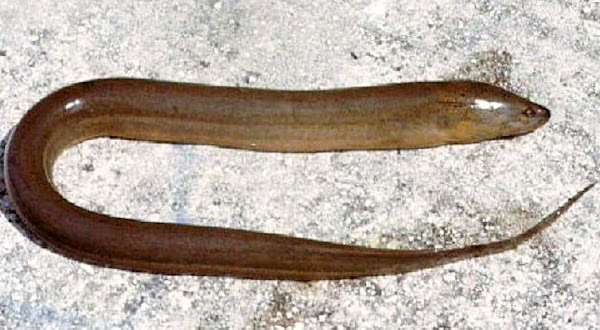
Feeding
Main diet of the Asian swamp eel includes fishes, shrimp, crustaceans, fishes, crayfish, turtle eggs, frogs and occasionally detritus.
Breeding
The Asian swamp eel is hermaphroditic. All young are females, and some take on the masculine phenotype as juvenile fish begin to mature. The males are capable of changing their gender. This feature allow them to replenish female populations when female densities are low. And this gender change can take up to a year.
Females lay eggs in bubble nests located in shallow waters, and spawning can occur throughout the year. These bubble nests float at the water’s surface and are not attached to aquatic vegetation. The females can lay up to 1,000 eggs per spawning event.
Uses
The Asian swamp eel is mainly used for food. It is very important economically in it’s native range.
Special Notes
The Asian swamp eel is a very hardy and strong species of fish. It can breath air and can travel on land if moist. Some also can survive for up to a week or several weeks without food. It has versatile motility and is even capable of moving over dry land for short distances.
Today this species is used mainly for food, and it is one of the common fish found mainly in Asia, from India, Southern China to Malaysia and Indonesia. It is a very important source of protein for the people in the northeastern part of Thailand. It is found in both tropical and temperate climates.
And they prefer to live in ponds, ditches, rice fields and streams. However, review full breed profile of the Asian swamp eel in the table below.
| Name | Asian Swamp Eel |
| Kingdom | Animalia |
| Phylum | Chordata |
| Class | Actinopterygii |
| Order | Synbranchiformes |
| Family | Synbranchidae |
| Genus | Monopterus |
| Species | M. albus |
| Binomial Name | Monopterus albus |
| Other Names | Also known by some other names such as Rice eel, Swamp eel, Ricefield eel, belut, rice paddy eel, ta-unagi and White ricefield eel |
| Breed Purpose | Mainly food |
| Weight | Can reach up to 450 grams of live body weight |
| Special Notes | Hardy and strong species, can breath air and also can travel on land, can survive for up to a week without food, today used mainly for food, one of the common fish found mainly in Asia, very important source of protein for the people in the northeastern part of Thailand, found in both tropical and temperate climates, prefer to live in ponds, ditches, rice fields and streams |
| Breeding Method | Natural |
| Climate Tolerance | Native climates |
| Body Color | Mainly dark, with dark olive or brown dorsal coloring and light orange ventral coloring. Some can also be of brightly colored with yellow, black and gold spots. |
| Rarity | Common |
| Availability | South Asia |
